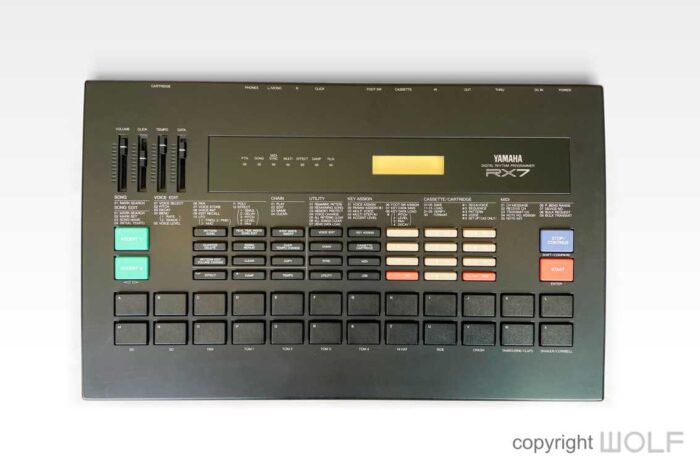WOLF retro DESIGN REVIEW. 13th July 2022
Was this the first time Yamaha introduced a curve into their digital instruments?
A retro review looks at products that are at least over ten years old from a present-day WOLF design perspective. While the technology and fashion of the period influence design, and are taken into consideration, great design ideas will transcend their eras to be timeless.
Interesting and factual information may be provided, but our review aims to deliver insight from the perspective of a designer’s mind and eyes.
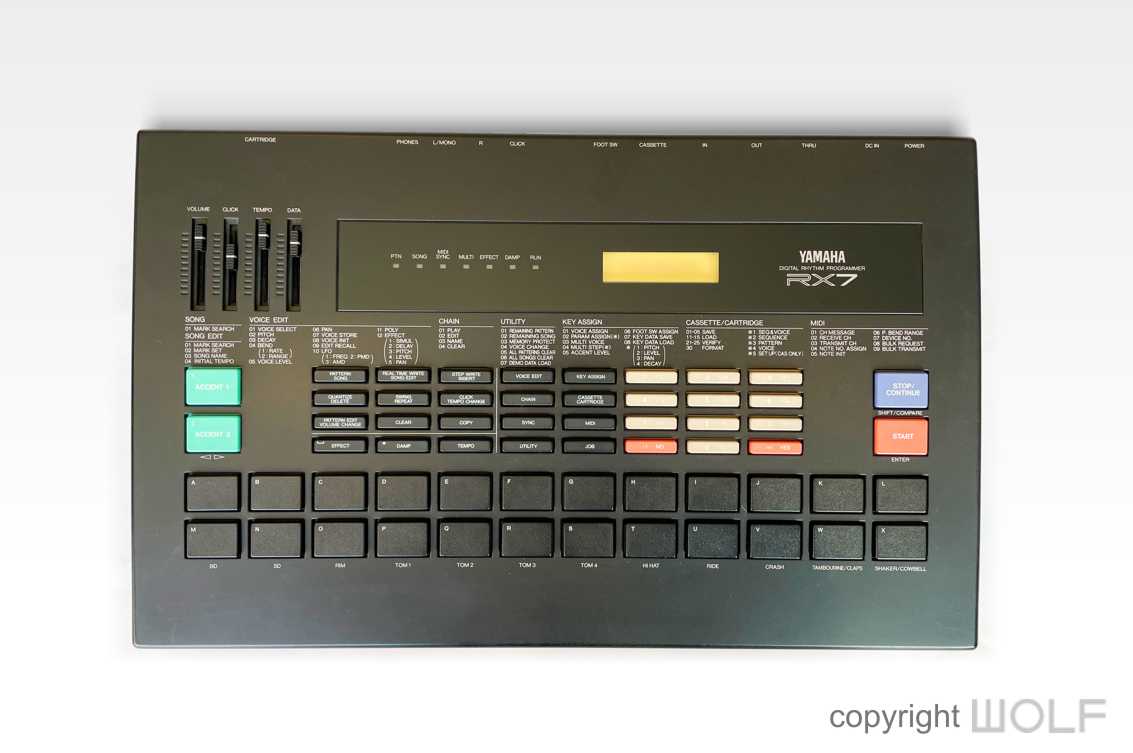
The RX7 that is not a car
Introduction
Product Focus
As with most reviews the focus is on the design and its evolution within the industry. The functioning systems and sound quality are not necessarily considered.
Product description
The RX7 is a drum machine released almost a year after their state-of-the-art RX5. It can be seen as either a more affordable RX5 or evolution of RX11/RX15 models.
Price and Availability.
With an original price tag that was almost half of the RX5, the RX7 was a very popular. With 100 internal sounds it was probably better value in a smaller package.
Additional information
The RX7 had less sound editing capabilities than its big brother and for that reason the RX5 remains a little more sought after.
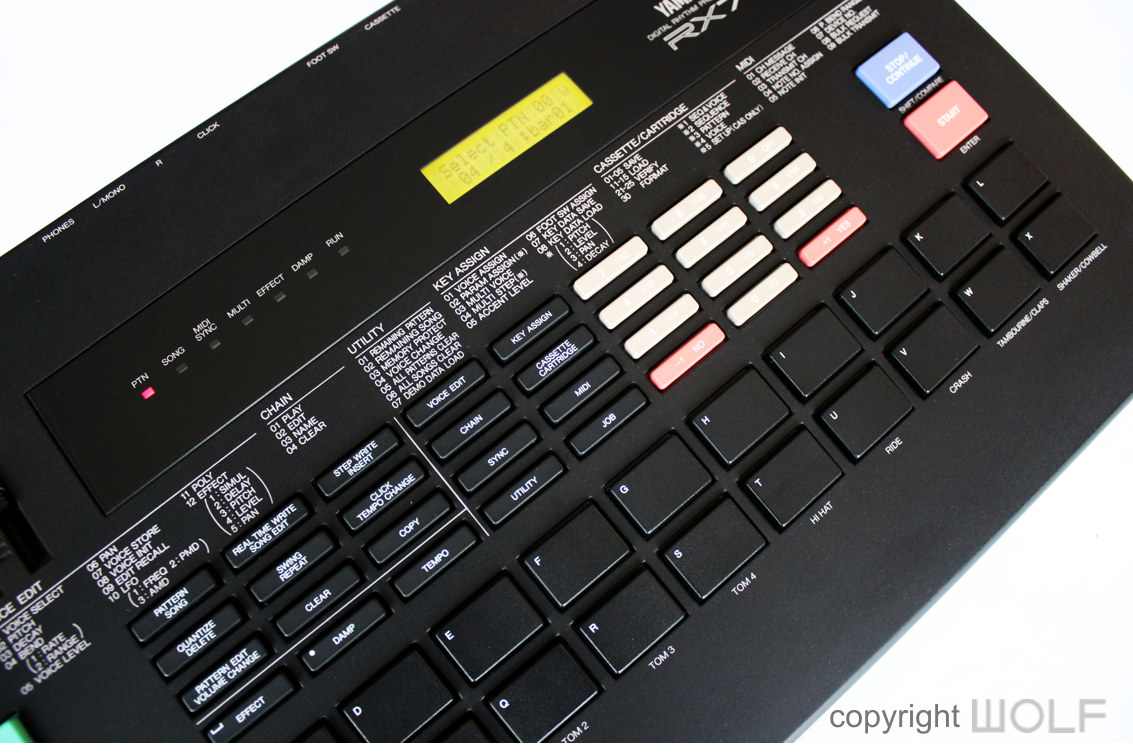
Review
First impression/ Delight
The RX7 reduced in size and complexity from the RX5. It looks more friendly with well-defined edges and sides that slenderize the overall unit. It breaks away from other gear at the time with its gentle curved form. This was one of the first pieces of YAMAHA equipment to feature a curve. The designers at Yamaha would take note and apply a similar concept to the V-50 synthesizer in 1989.
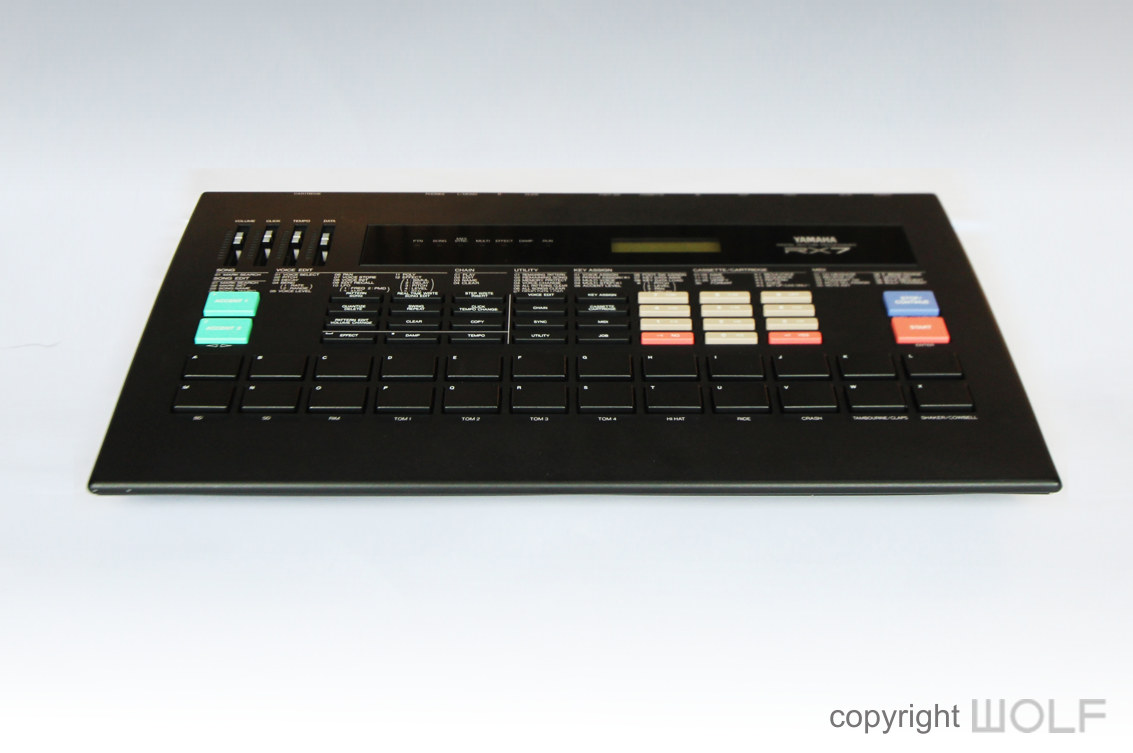
Exterior Design Review
The main panel has a gentle curve from front to back. Bands of buttons are neatly organised below a continuous acrylic display panel near the top. The buttons are identical in design to those on the RX5.
The RX7 also departs from the corrugated band of bars seen on previous RX drum machines, and appears cleaner and more minimalistic. This does however make the top section seem disproportionate to the bottom section. Something that may have been improved with the incorporation of a larger display screen.
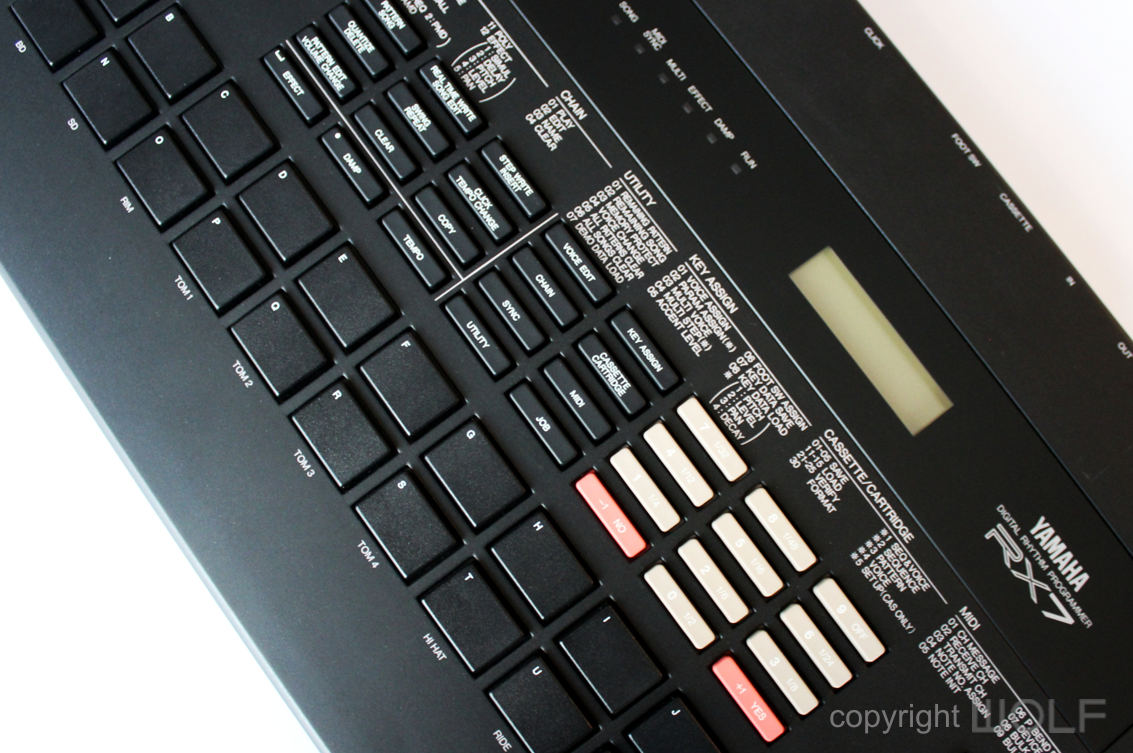
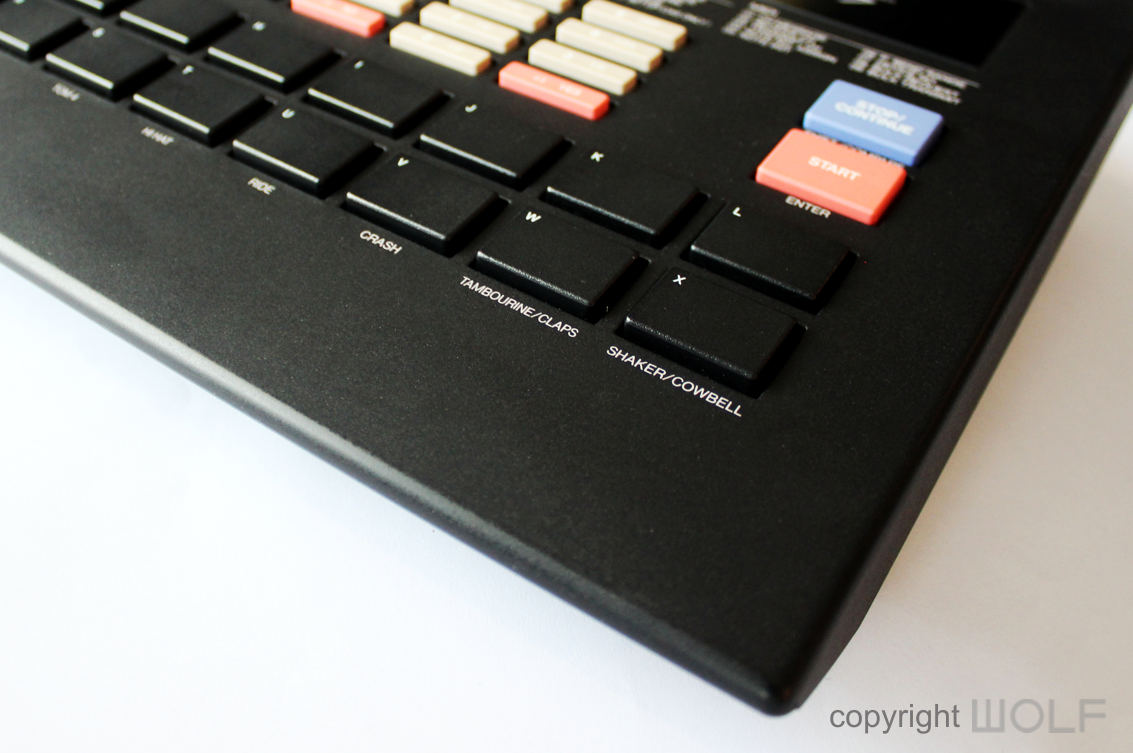
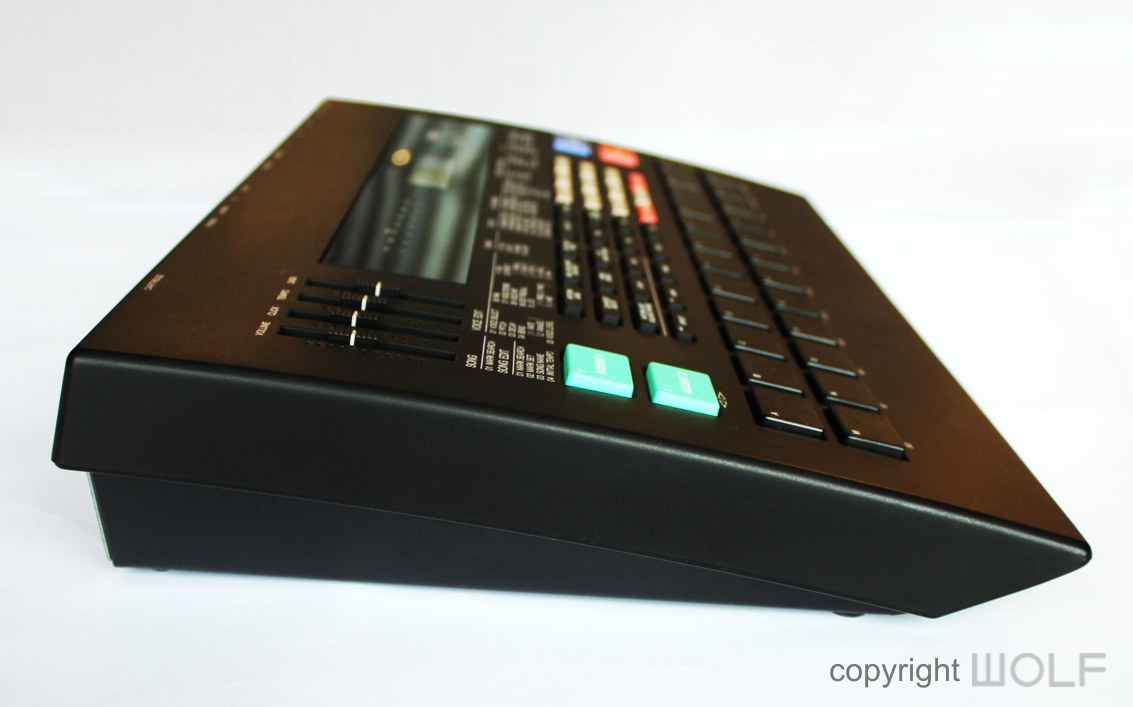
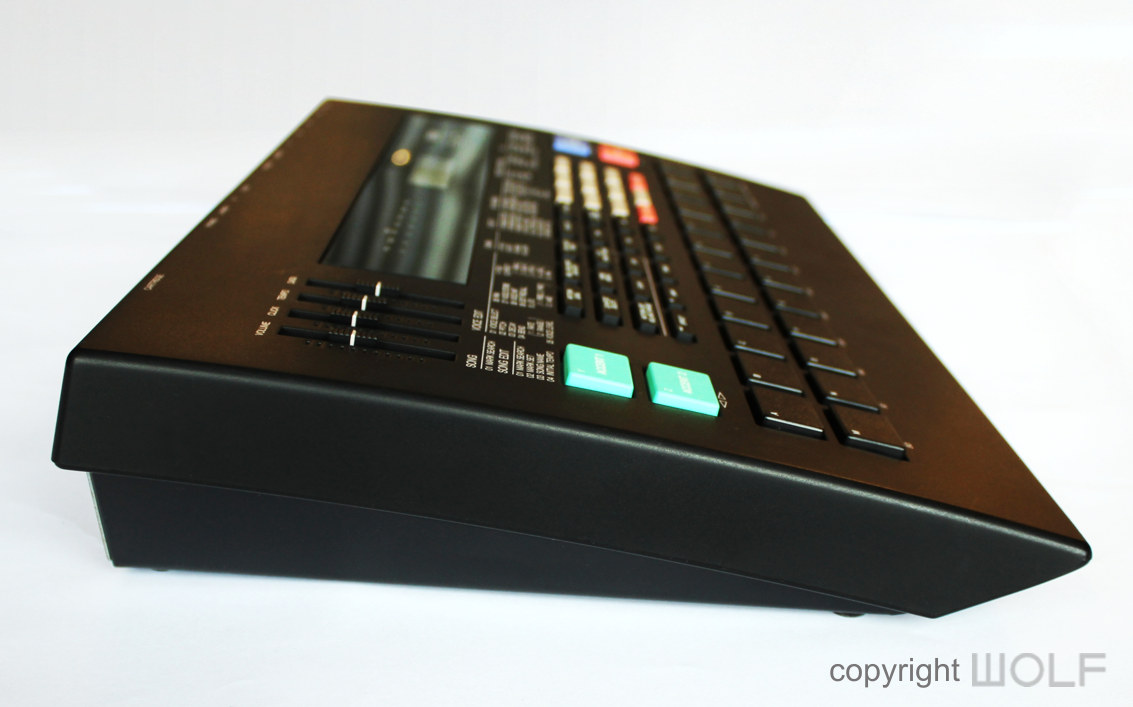
Craftmanship.
The RX7 belonged to a family of beautifully crafted black machines built with best materials and finishes in mind.
All buttons and sliders were made to be strong and durable. We have yet to see an RX7 with broken buttons, although the colour on some of them can discolour over time. The screen is clear and bright and encased in a large sheet of acrylic that spans the length of the unit. Some screens have been known to die or lose clarity over time and aftermarket screens are available. The casing is a high-grade plastic painted in matt black with fine grainy texture. The underside is all metal with rubber bumpers for grip.
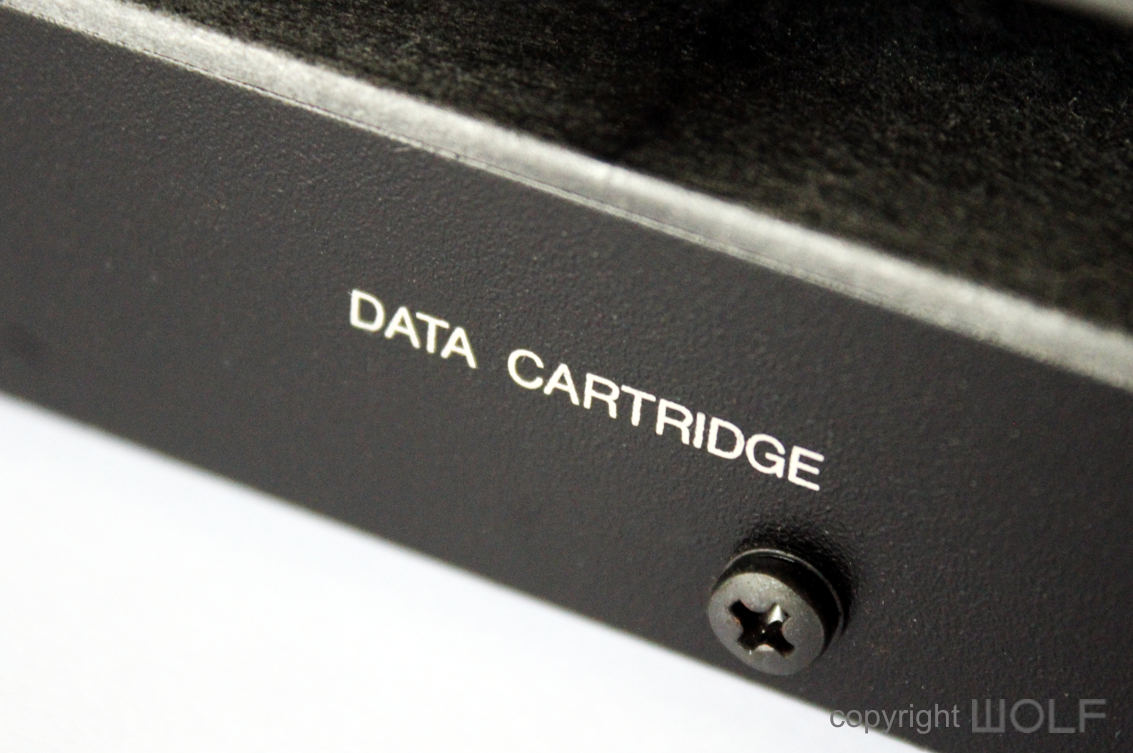
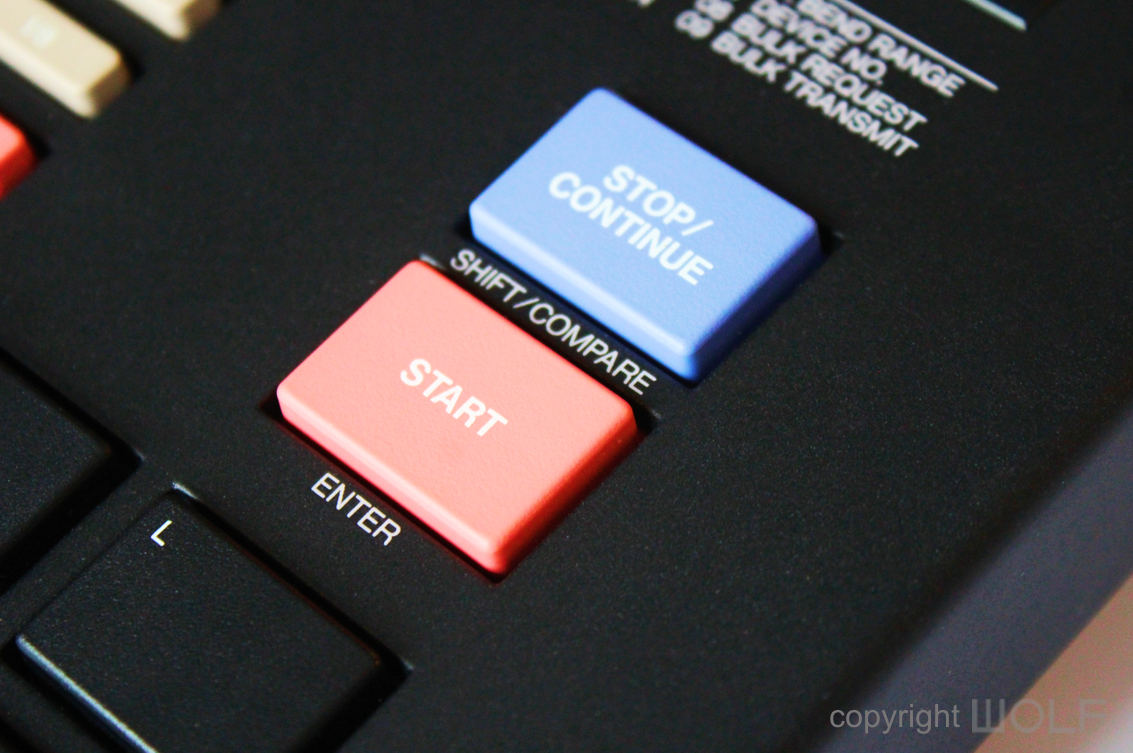

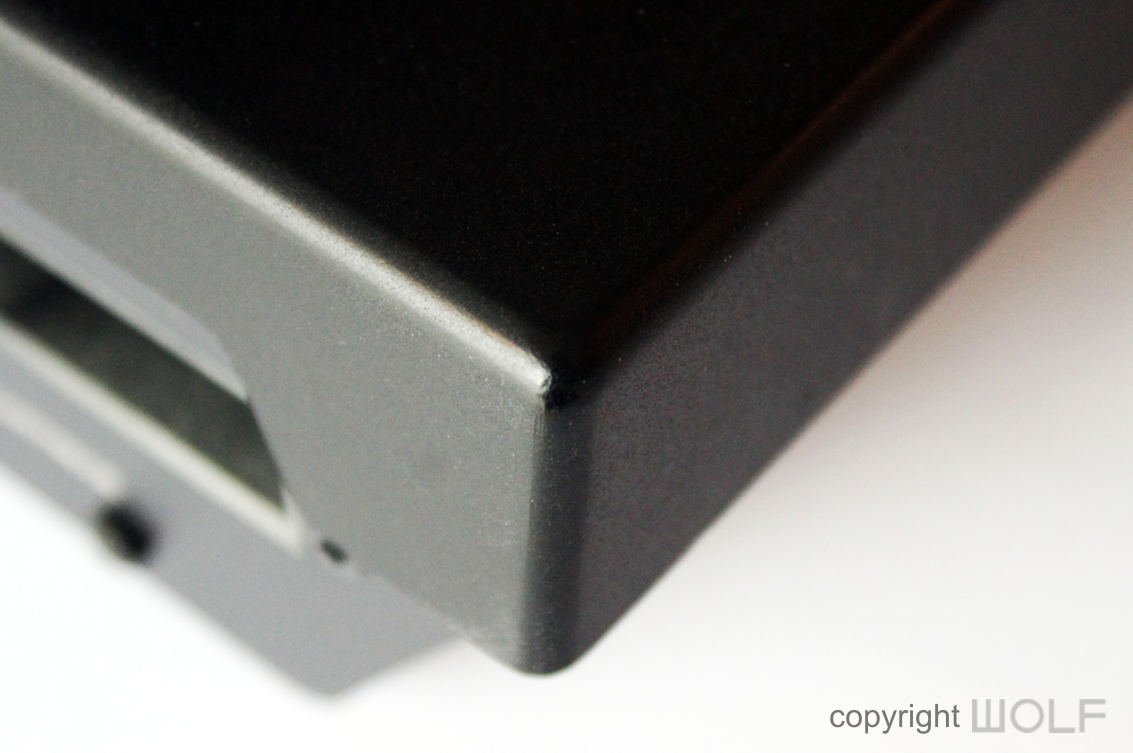
FUNCTION- Experience.
The buttons are well organised to be efficient and practical. They are a good size and designed to be pressed fast and hard. They are however noisy because there is no softness or padding beneath them. In our opinion they feel somehow loose with limited sensitivity.
There are less sliders than on the RX5 but many will argue that the additional sliders were not that useful in the first place.
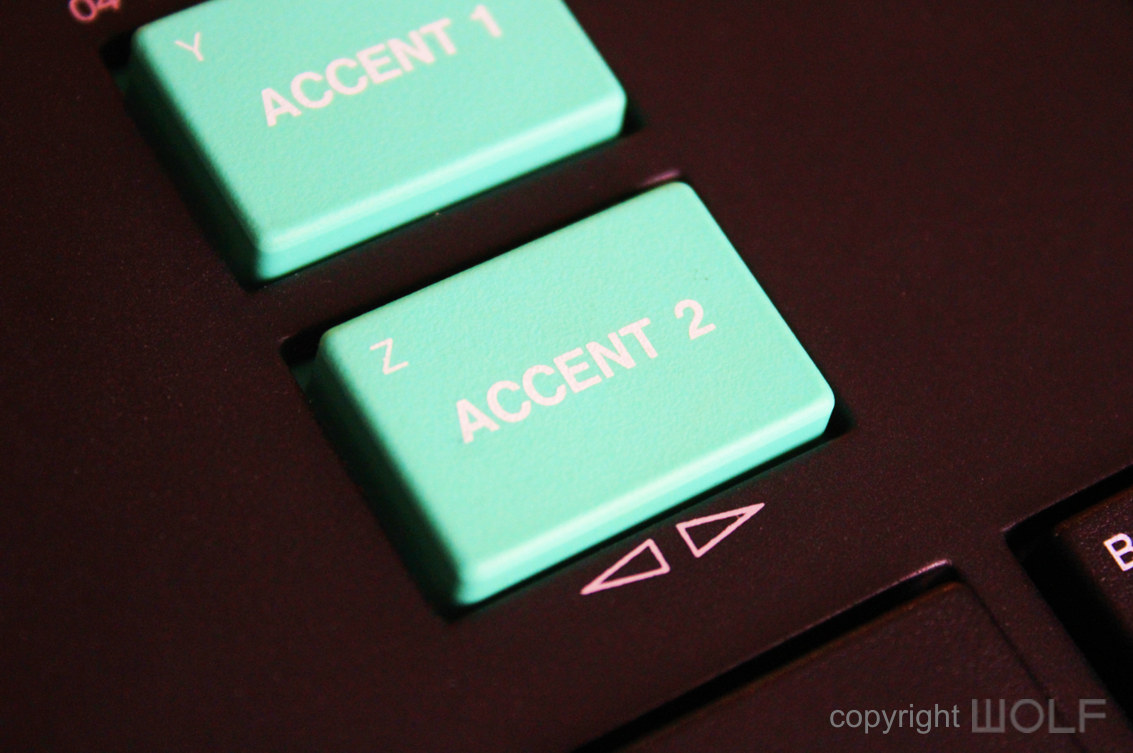

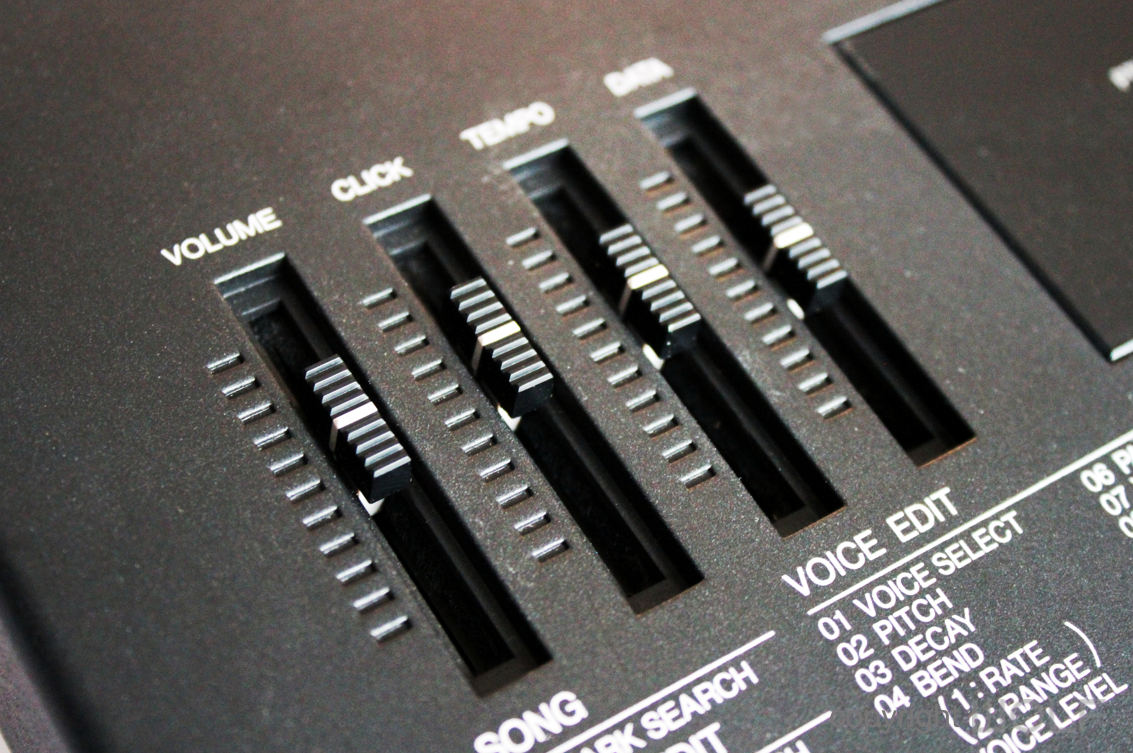
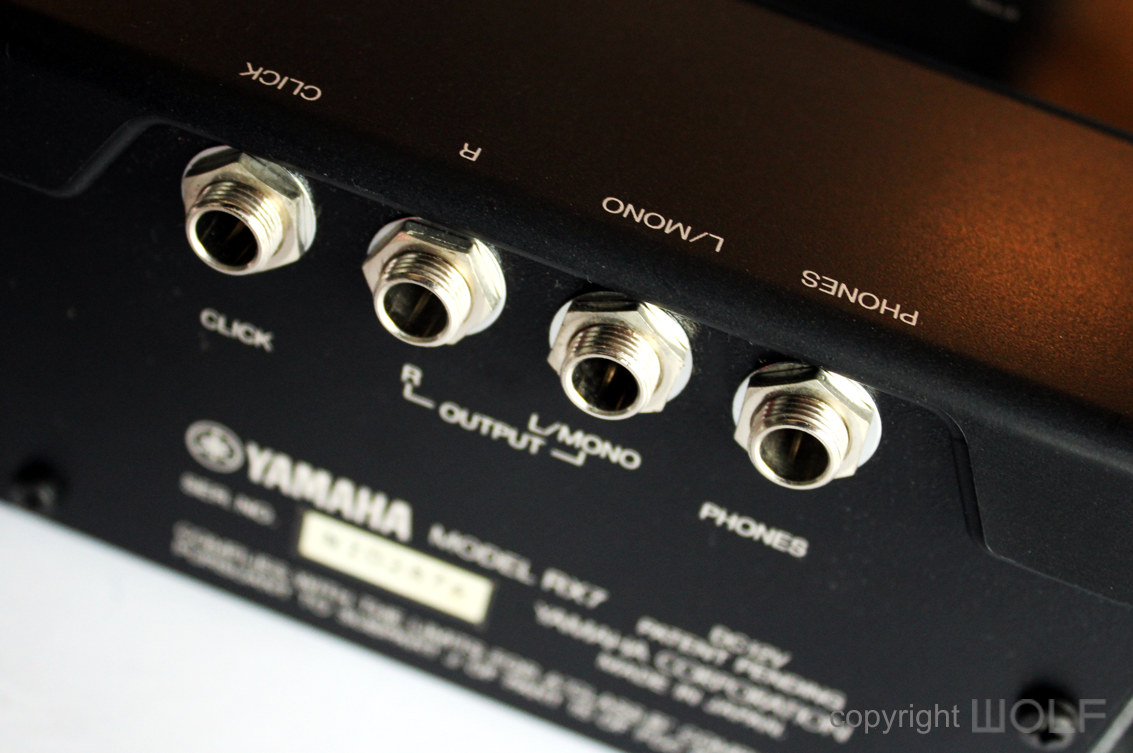
Desirability / Collectability and what to look for.
The RX7 was a quality machine and the design and craftsmanship reflect this well. Most are still in perfectly functioning order. The buttons tend to go very smooth and shiny, and so too will the corners of the unit from hand contact. The RX7 also had a very beautiful hard case which is rare and often only found in Japan. An original case does compliment the unit well.

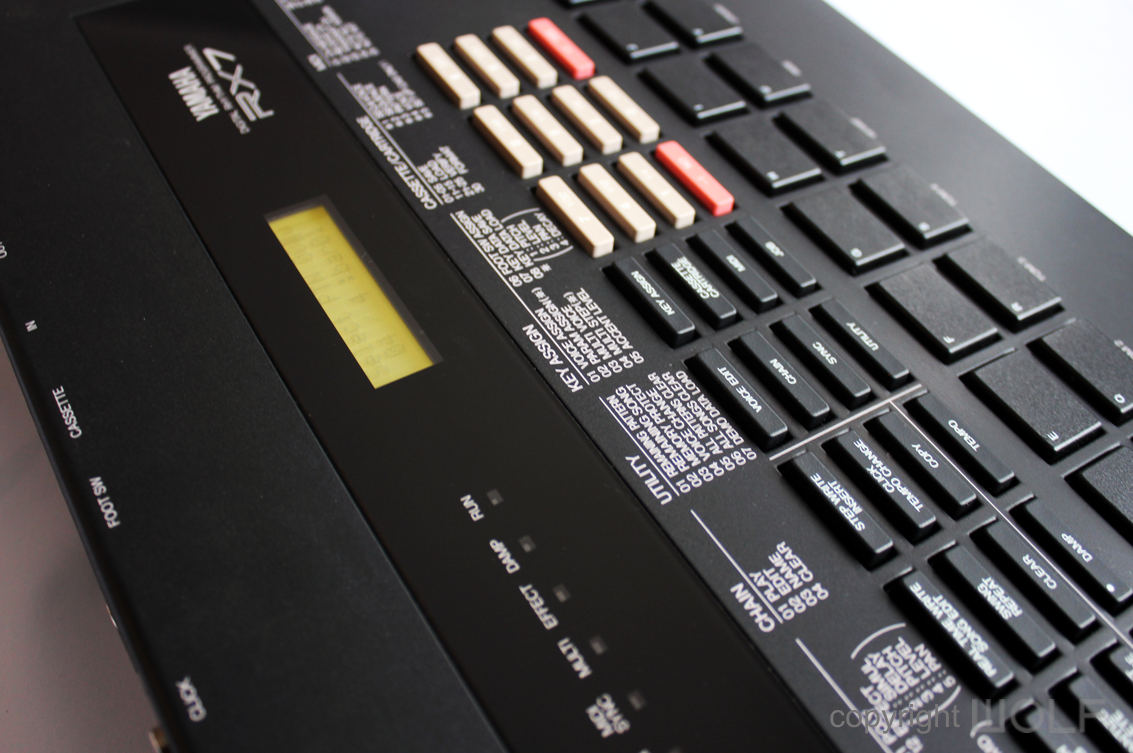
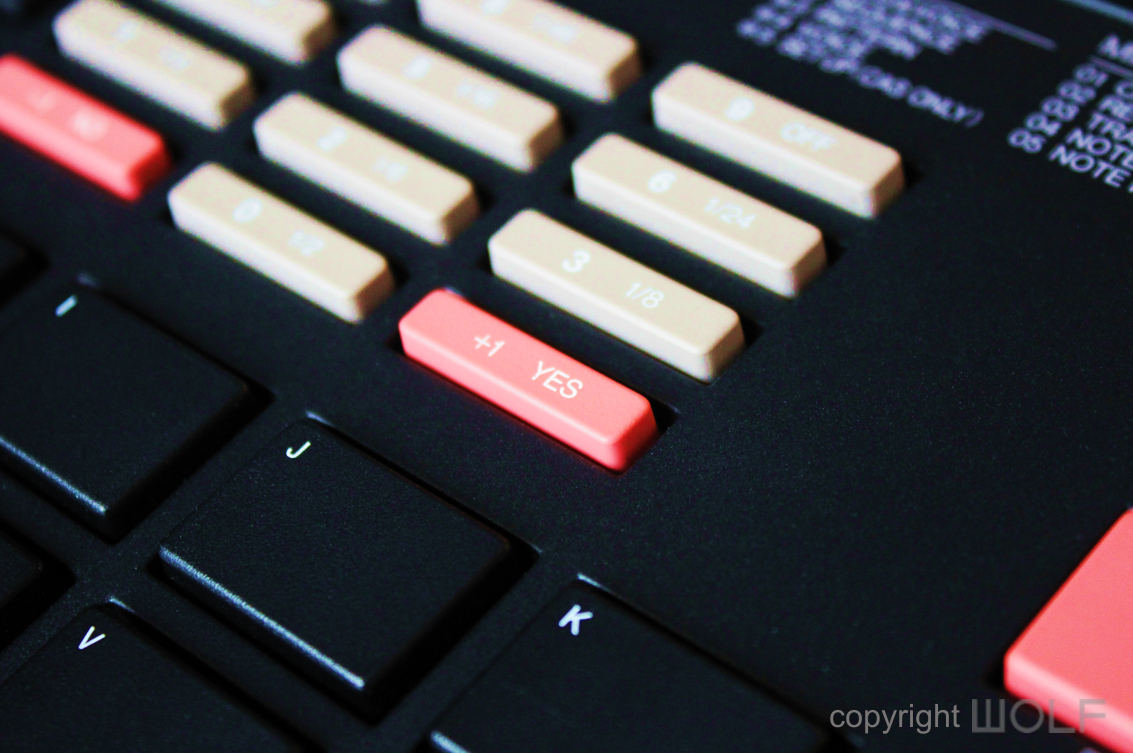
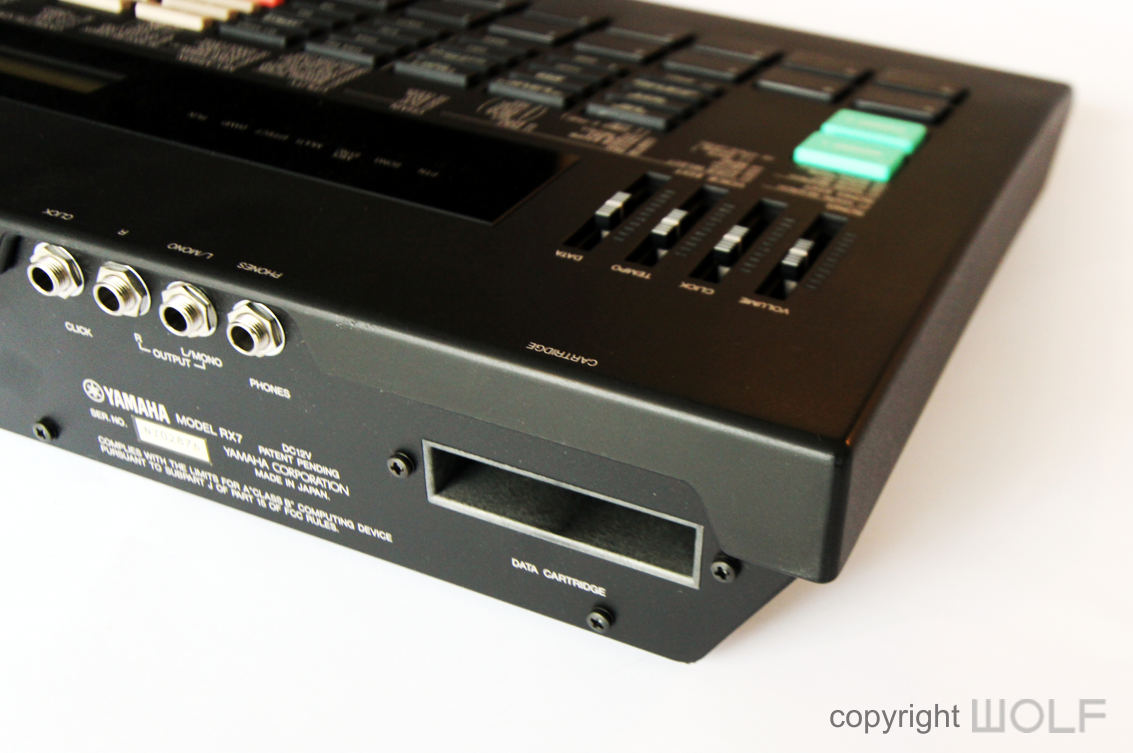
WORD OF THE WOLF
The RX7 is obviously not as impressive today as it was in 1986, but it’s still kind of retro and cool. They are inexpensive and you could secure a good one without making a dint in your wallet. Make sure it’s fully working, especially the screen because without it you are operating blind.
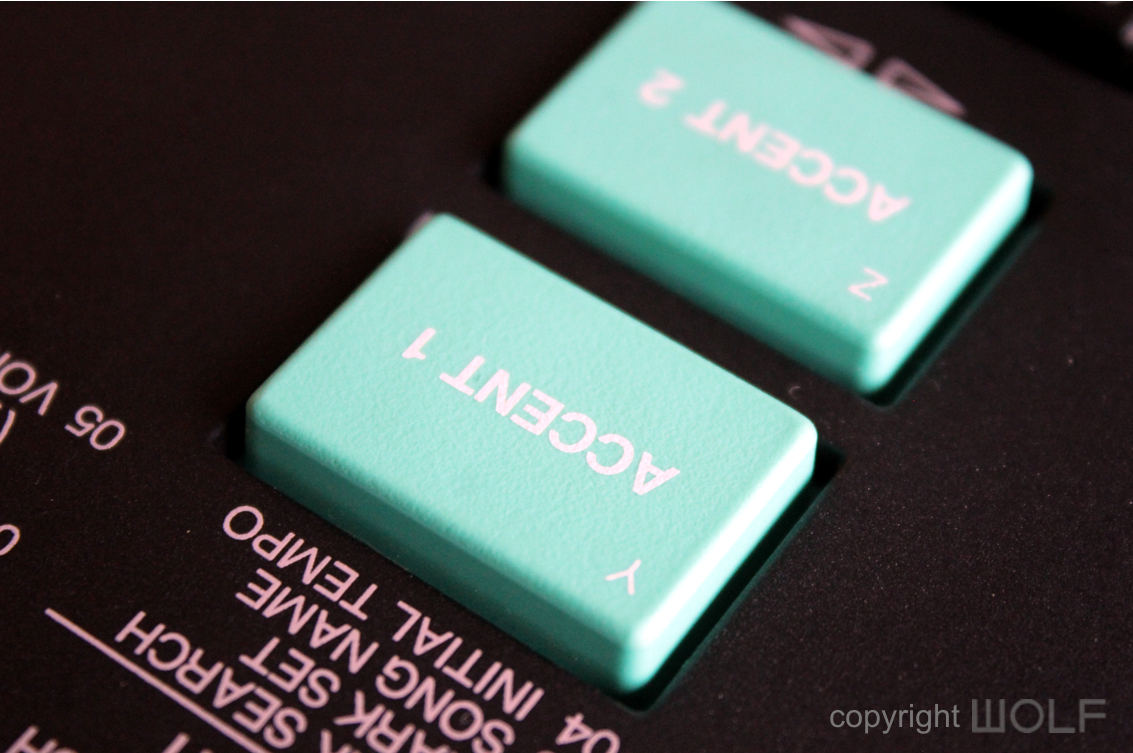

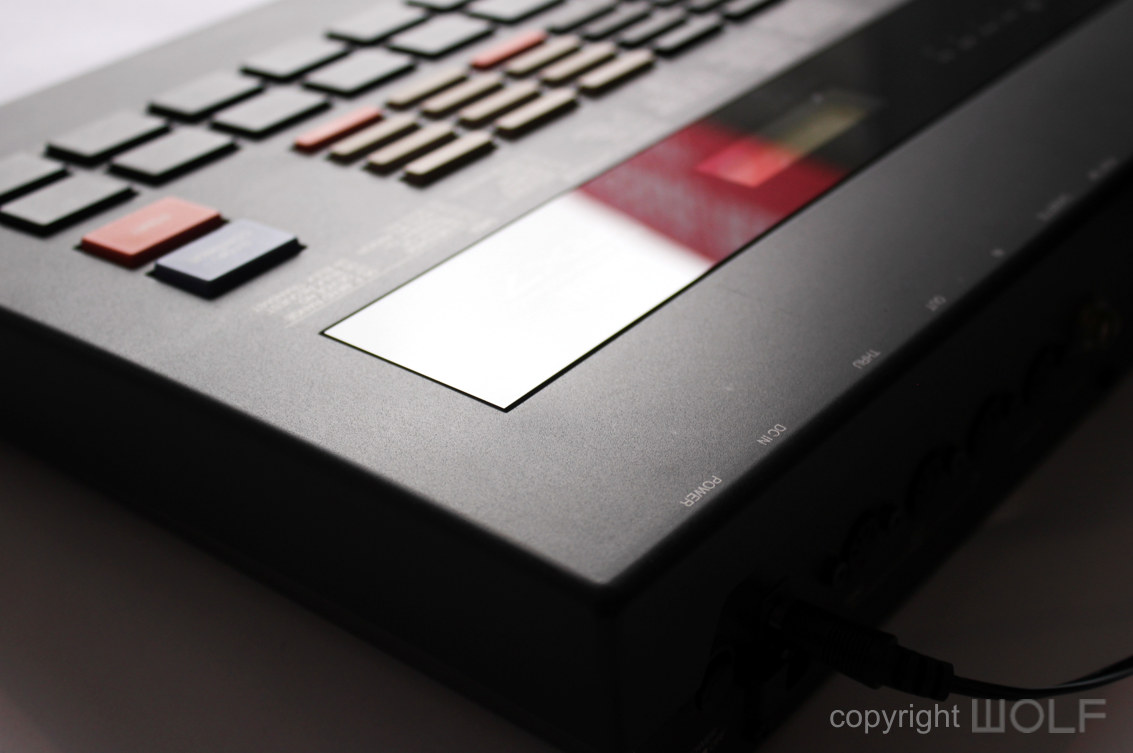

Is this Yamaha’s fist ever curve?

Left- The Japanese RX7 manual had a simple white cover. Right- European manual had the same aqua coloured cover as most Yamaha digital instruments at the time with a small graphic of the machine itself.
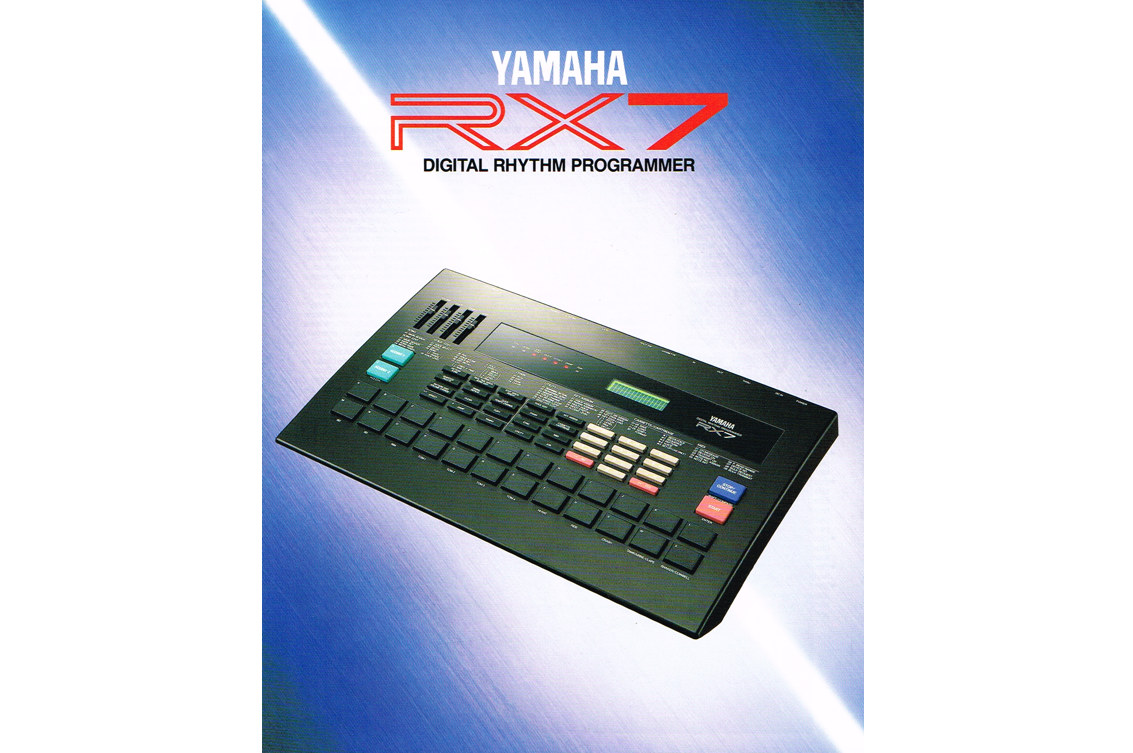
Original brochure
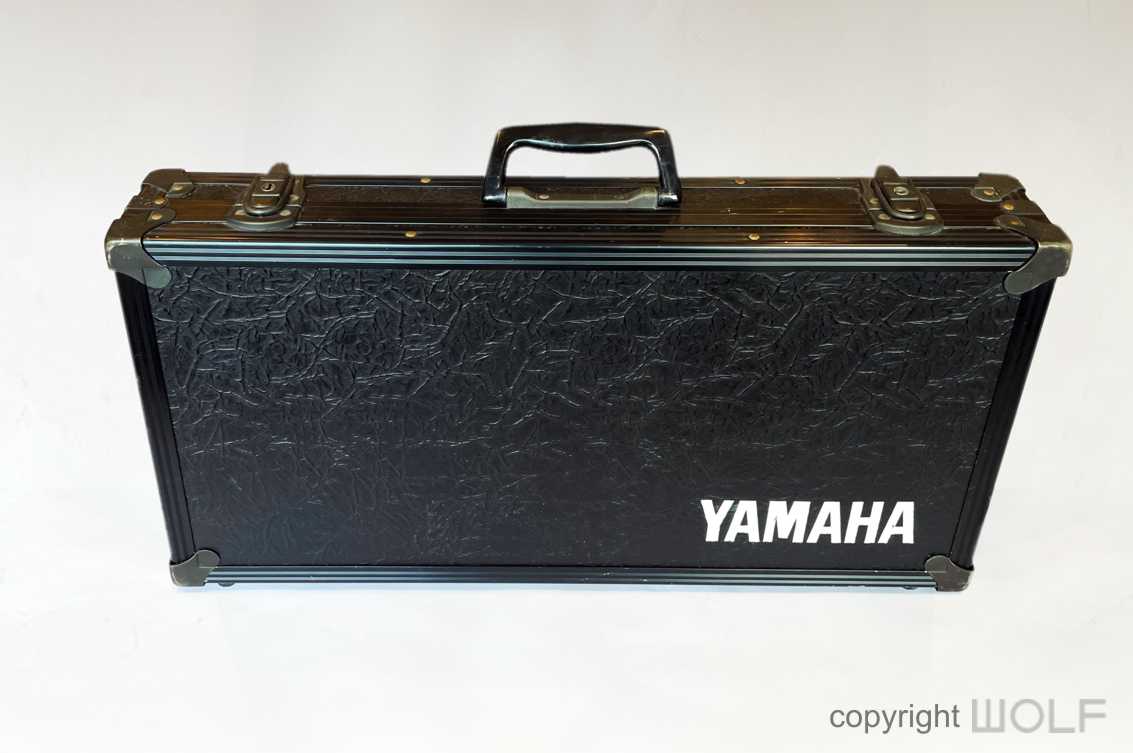
The original case is very rare
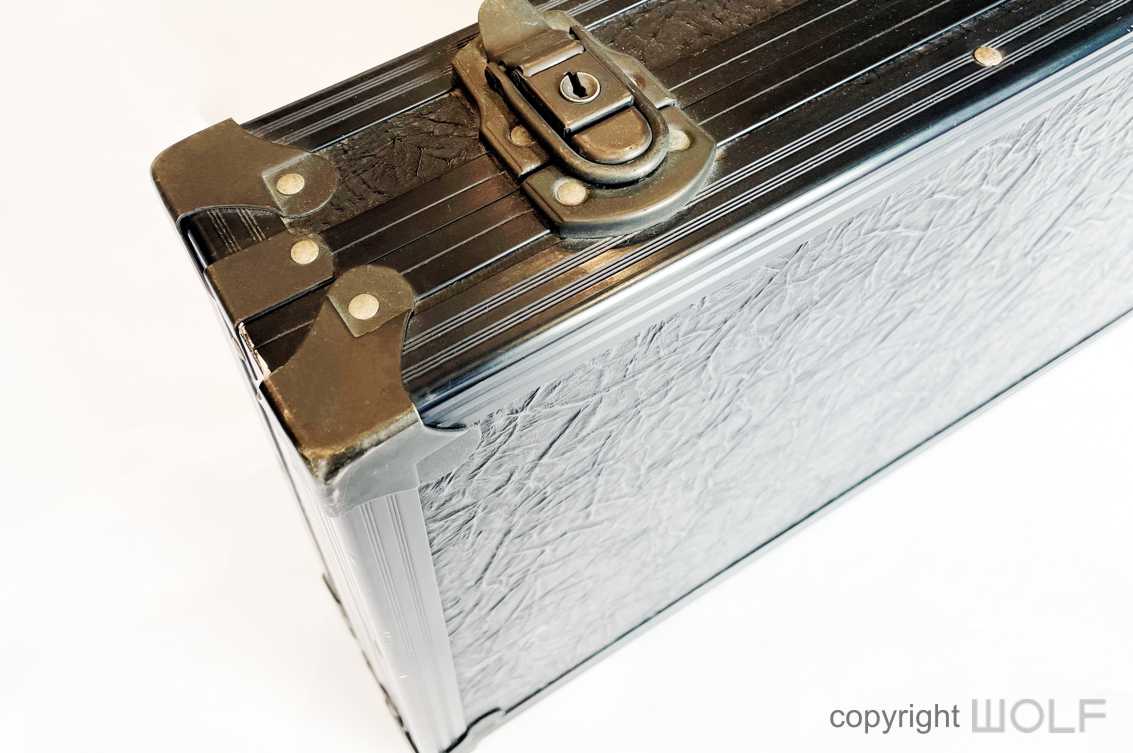
Interestingly Yamaha went a little creative with the RX7’s case by using different metal corners with an antique brass finish.
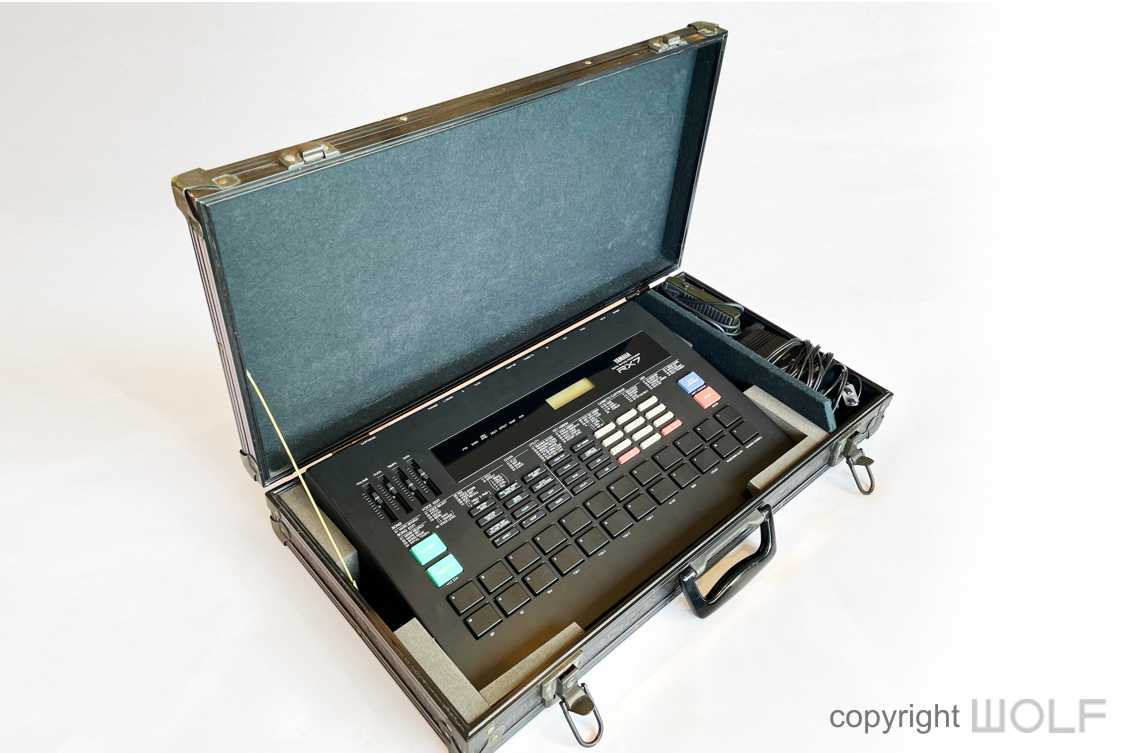
WOLF DESIGN EXCELLENCE SCORE = 6.5
The information in this review is intended for informational or educational purposes to provide readers an understanding of how something may be seen from a certain design perspective. In this case it is from the view point of WOLF DESIGNS. As design is subjective this review should only be considered as an independent opinion. Information further to being of an opinion is provided to the best of our knowledge based on our own research at the time of doing the review. We cannot be held responsible for any inaccuracies or inconsistencies and reserve the right to change or update any content as appropriate.
The final responsibility of the design resides with the original manufacturer.

